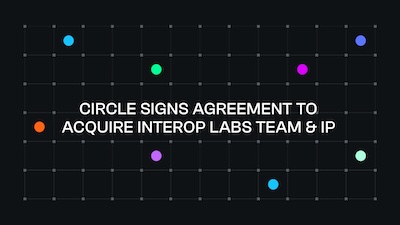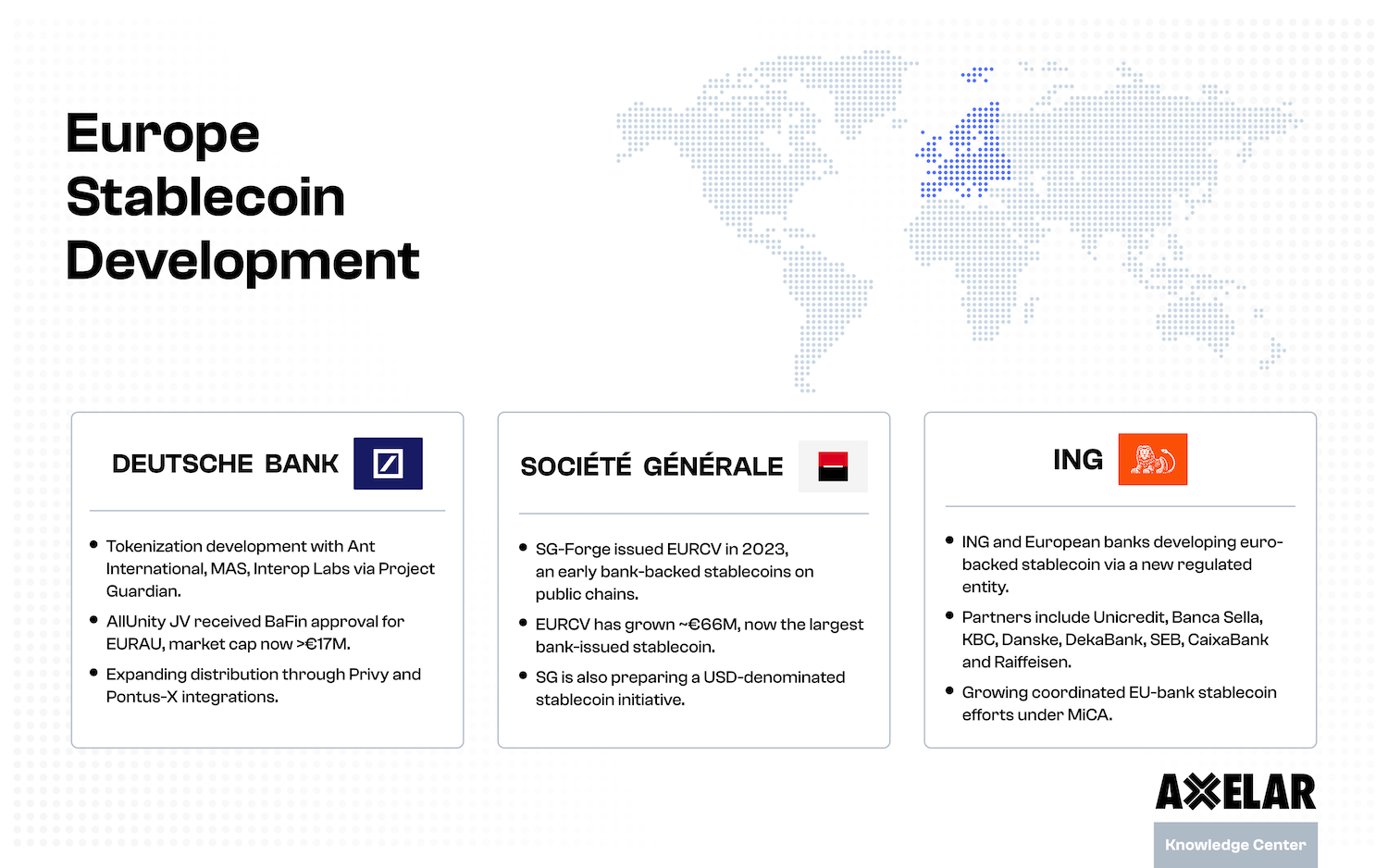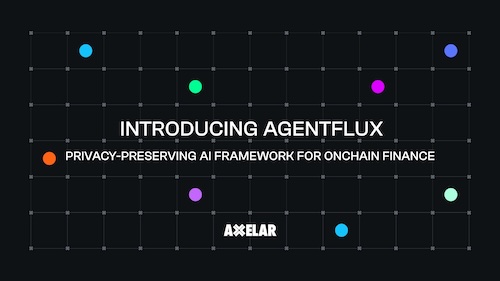What is axlUSDC & how do you get it?
Table of Contents



Tldr
- axlUSDC is a wrapped, multi-chain representation of USDC, a dollar stablecoin.
- For each unit of axlUSDC, there is a unit of USDC locked in an Axelar Gateway on Ethereum.
- axlUSDC is secured by a dynamic validator set running delegated Proof-of-Stake, which holds key shares in the Axelar Gateways via multi-party cryptography.
- Acquire axlUSDC in three ways:
- Swap via liquid pairs on any of the DEXs listed here.
- Swap via Squid, a cross-chain liquidity router built on Axelar.
- Mint via Satellite, a cross-chain bridge built by Axelar
USDC is the ticker for USD Coin. It's a stablecoin, pegged to the US dollar, issued by Circle, a US company. So, what is axlUSDC, why do we need it, and how can you get it? This post will briefly explain.
USDC is issued on Ethereum – but dApps and users in other ecosystems also value the stablecoin's properties. Many of them use axlUSDC, a wrapped version of USDC that can travel between chains, as a multi-chain stablecoin.
In brief, axlUSDC is generated via cross-chain bridges. These dApps accept a deposit of USDC at an Axelar Gateway on Ethereum, and mint an equivalent amount of axlUSDC on the destination chain (minus fees).
Two key points to understand what axlUSDC is and how it can be used:
- For every unit of axlUSDC, there is a unit of USDC locked in a Gateway on Ethereum.
- Once minted, axlUSDC can flow from chain to chain, without going back through Ethereum.
Gateway addresses on various EVM chains and the token addresses of axlUSDC on various chains are listed in the Axelar docs, here.
How is axlUSDC secured?
Like all Axelar-wrapped assets, axlUSDC's security depends on a dynamic validator set (numbering 70 at this writing), running delegated proof-of-stake. In other words, Axelar secures cross-chain communication using the same approach as many of the chains it connects.
Units of axlUSDC are minted when a user deposits USDC into a Gateway contract on the Ethereum chain. Axelar's decentralized validator set secures these Gateways via key shares in a multiparty cryptography scheme. Here's a brief explanation of Gateways and how they are secured, from the "Learn More" section of the Axelar documentation:
Once a cross-chain message is initiated by a dApp user, its first stop is to interact with an Axelar Gateway. On each chain connected to Axelar network, a Gateway is deployed. On EVM chains, it is a smart contract address. On Cosmos and other non-EVM chains, it is an application with logic and the ability to communicate with Axelar network. This Gateway is used to receive messages from a connected dApp and send them into the Axelar network for routing to any connected chain.
The Gateway is controlled by a key, which is held jointly by all Axelar validators. This is accomplished through a multiparty cryptography scheme, where the key is divided into many pieces, called key shares. Each validator holds many key shares, and the amount of shares is dictated by the amount AXL tokens staked with the validator.
Where can I get axlUSDC?
There are three ways to acquire axlUSDC:
- DEXs on many connected chains list pairs in axlUSDC, supported by liquidity pools. This page includes a regularly updated list of liquid pools for axlUSDC (and all Axelar-wrapped assets).
- Squid, built with Axelar's General Message Passing, provides liquid cross-chain swaps using axlUSDC as a routing asset. Using Squid, you can start from any connected chain and swap into axlUSDC on any other connected chain. Squid is the engine powering liquid cross-chain swaps on a growing list of DEXs, and you can always use their cross-chain swap widget to handle any kind of cross-chain swap you like, without having to trust your funds to a centralized exchange.
- If you're holding USDC and want to take it cross-chain, you can bridge it via satellite.money, Axelar's bridging app.
For now, axlUSDC is widely used in the Cosmos ecosystem, where it is the canonical representation of USDC on Osmosis and many other Cosmos chains. Axelar was instrumental in bringing USDC into the Cosmos ecosystem to avert a liquidity crunch, following the collapse of Terra's UST, last year.
What's next for Axelar and USDC?
Recently, Axelar and Circle announced a partnership to develop Composable USDC. In brief, Circle is developing paths for native USDC to exist on multiple chains, and Axelar is delivering General Message Passing so that dApps can create more seamless ways for users to transfer USDC.
With Composable USDC, developers will be able to use these native versions of USDC on multi-chain dApps, sending and receiving USDC alongside arbitrary packets containing data and function calls. So, dApps using native USDC cross-chain will be able to deliver one-click experiences for users, with multiple steps handled on the back end. This can extend the reach of stablecoins across multiple chains and applications.
Learn more about cross-chain function calls using General Message Passing:


